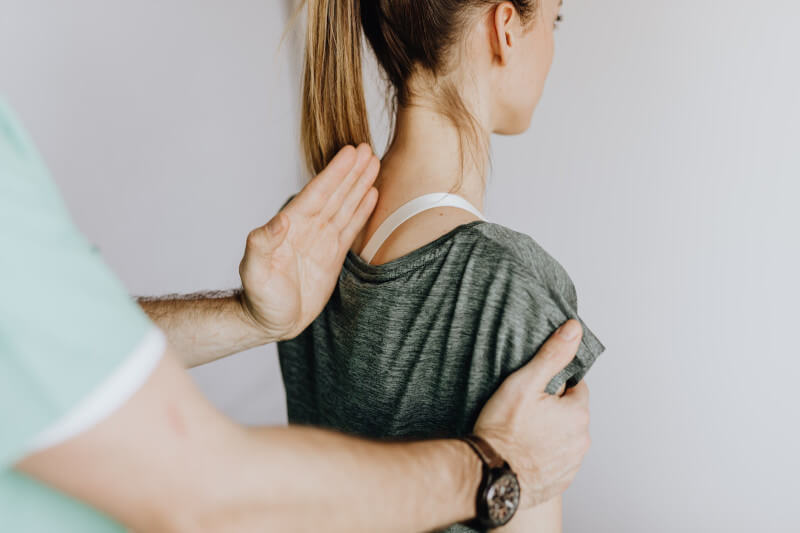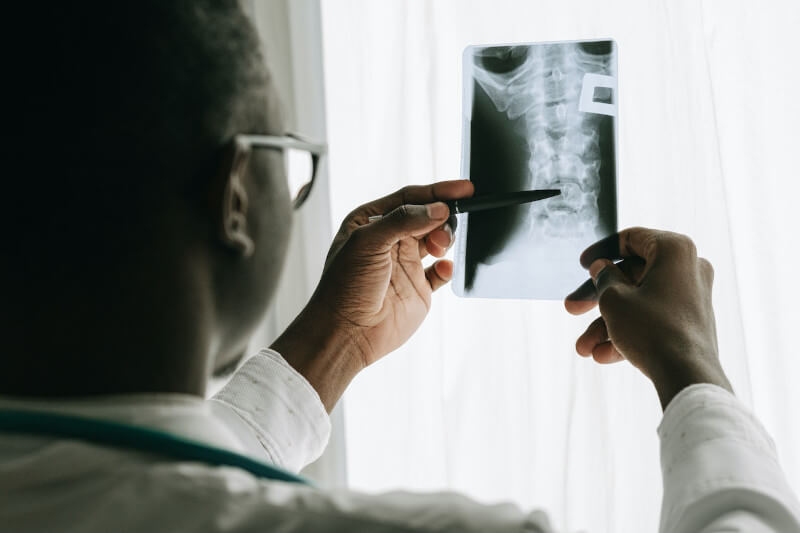Incorrect posture, excessive use of muscles, an injury, or disc herniation are the most common causes of pain in the upper back. Lung cancer, osteoarthritis, and spinal infections are three additional potential causes of this condition. The upper back encompasses the region of the body that can be found between the nape of the neck and the bottom of the rib cage. The thoracic spine is comprised of the twelve bones that comprise the upper back, which medical professionals refer to as the thoracic region.
At the bottom of the neck is where the first bone of the upper back begins, and the last bone of the backstops is just below the ribcage. Pain in the upper back can originate from any point between these bones. The majority of people who suffer from upper back pain define it as a feeling of burning or tugging in one specific location, which could be the site of the injury or tension.
Common Triggers of Pain in the Upper Back
According to the findings of a study that was published in the journal Occupational Medicine, even though it is more uncommon than lower back pain or neck pain, one in ten men and one in five women might experience upper back pain. Pain in the upper back, also known as thoracic spine pain or TSP by medical professionals. The following are some of the more common causes:
Insufficient Exercise for the Muscles and Poor Posture
Back pain can be caused by either insufficient use of muscles or improper use of the muscles. Through consistent resistance training and exercise, a person’s muscles can be conditioned over time to become either more robust or more resistant to fatigue. Additionally, the opposite is also true. Humans can let their muscles atrophy over time if they do not use them appropriately.
Deconditioning certain muscles, such as those found in the back, can be accomplished simply by maintaining an incorrect sitting posture for an extended period of time while working at a desk. This is something that a person could do while at work. It’s possible that hunching in a chair while working at a desk will cause your muscles to weaken. The gradual deterioration of muscle strength over time can cause pain in the surrounding region as a result of the muscles’ increased susceptibility to strain and irritation.

When an individual slouches, strain from the gravitational pull and the body’s weight presses on the spine, the neck, the discs, and the ligaments. This can cause serious health problems. This tension, if left unchecked, could eventually result in pain as well as other problems. In most circumstances, it is possible to adjust the muscles so that they become more resilient and stronger. The first step in this process involves adjusting one’s sitting posture and making sure to take frequent breaks away from one’s desk to move around and stretch.
In addition to helping improve back strength, exercising and working at a standing desk can both be beneficial. However, training the muscle takes patience, and anyone who suffers from persistent upper back pain as a result of weak muscles may benefit from consulting a physical therapist to develop an exercise routine that is tailored to their particular requirements.
Excessive Use of Muscles
Another common reason for upper back pain is the result of overusing the back muscles. This is usually the result of performing the same movements over and over again for an extended period. One possible effect of this is:
- Tension
- Soreness
- Irritability in the muscles
A pitcher in baseball is a good example of how this can happen because they repeat the same motion every time they throw the ball, which can cause wear and tear on their shoulder over time. This can lead to shoulder problems. There is a possibility that pain will be caused by other repetitive movements. Muscle discomfort, stiffness, or strain can develop in a person who performs the same motion repeatedly throughout the day or who lifts things higher than their head regularly, for example. If they choose to ignore these warning signs, the pain may develop into a chronic condition.
The first step in the treatment of muscle overuse is generally to have the patient rest the affected area while also applying heat or ice packs to the area to stimulate blood flow to the muscle tissues. This could assist in finding ways to avoid repetitive movements where viable or to take regular breaks between activities. A physiotherapist may make recommendations for exercises to increase mobility and muscular endurance in the affected region.
An Injury of a Traumatic Nature
Back pain can be brought on by a traumatic injury as well. This could be the result of circumstances that include:
- Accidents involving car trips
- Falls at work
- Improper lifting
- Excessive physical exertion
In some cases, the injury is immediately apparent, and the pain starts soon after the incident. On other occasions, the discomfort might not start until much later or the following day. Traumatic injuries can be quite severe, and the problems that can arise as a result of injuries, such as a broken spine, put an individual at risk for long-term complications. These complications can include ongoing pain, damage to the nerves, and even paralysis.
If you want to avoid experiencing pain for an extended period, it is important to have any potential back injuries checked out by a medical professional. When someone suffers an injury to their muscles, their primary care physician may recommend that they see a physiologist or physical therapist for assistance in the healing process. Surgery might be necessary for severe injuries.
Disc Herniation
Discs in the spine inhibit the vertebrae from scraping against each other. Although herniated discs in the upper back are not as common as those in the lower back, they can still occasionally occur there. The fibrous, pliable cushions that are found in between each vertebra are called discs. The condition known as a herniated disc occurs when a portion of the cushioning material between the vertebrae breaks through and presses on the spinal column.

Even a relatively light degree of pressure can cause significant discomfort in the middle of the back, in addition to other symptoms, such as tingling or loss of strength in the arms or legs. Most individuals don’t require surgery for herniation and will recoup with rest or by getting anti-inflammatory medicines.
Nerve Compression
A herniated disc can protrude far enough that it presses on a nerve in the area. A squished nerve in the middle of the back can lead to the following symptoms:
symptoms such as numbness and pain in the arms or legs
- Difficulty controlling urination
- Problems with bladder control
- Lack of strength
- Loss of control in the legs
When a herniated disc is the source of a pinched nerve, the treatment for the pinched nerve is analogous to the treatment for the herniated disc. In most cases, surgery is not necessary to treat a pinched nerve; however, spinal steroid injections may be recommended by doctors in certain circumstances.
Osteoarthritis
In some cases, the muscles are not the cause of back pain; rather, the problem lies in the bones and joints of the back. As age increases, there is a possibility that the cartilage that surrounds and protects the bones will deteriorate. Osteoarthritis is the medical term for this condition. It is the type of arthritis that manifests itself in older adults more frequently than any other.
If left untreated, osteoarthritis can eventually cause the cartilage that normally separates bones to deteriorate to the point where they can rub against one another. Additionally, this can put tension on the nerves in the spine, which can result in tingling or nerve damage in the limbs, especially the arms and legs. Anyone who has symptoms consistent with osteoarthritis should get a diagnosis and a treatment plan from their primary care physician as soon as possible. Pain management and maintaining normal joint function are typically the primary focuses of treatment.
